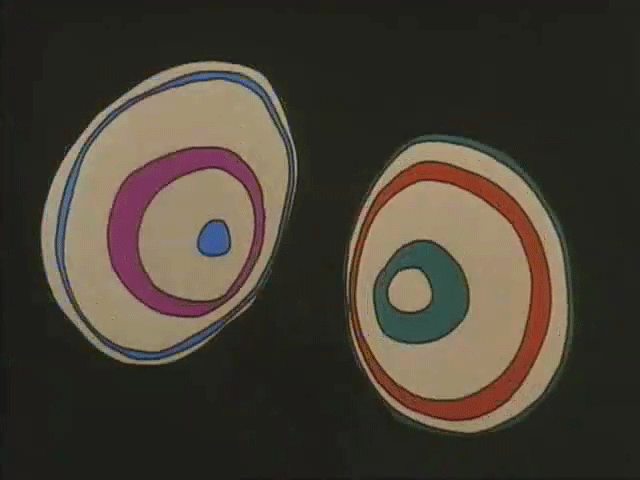
‘Born in Haifa, Israel and raised in the Brownsville neighborhood of Brooklyn, Ralph Bakshi remains an essential, idiosyncratic artist whose creative eccentricities are symptomatic of his stubborn, quixotic personality. It didn’t take long before Bakshi, a rambunctious student at a racially segregated high school for African-American residents of Washington D.C.’s Foggy Bottom neighborhood, developed his drawing skills beyond notebook doodles. After he moved back to Brownsville and graduated with a vocational degree from the School of Industrial Art, 18-year-old Bakshi followed a high school friend to work at Terrytoons animation studios in New Rochelle, NY, where he learned basic techniques of hand-drawn animation.
‘Television studio executives eventually took notice of Bakshi’s work, and in time greenlit one of his dopier ideas: a superhero serial called “The Mighty Heroes” that supplemented Terrytoons-produced “Mighty Mouse Playhouse” cartoons. But Bakshi soon grew dissatisfied with the quality of the cartoon, and sought out new ways to express himself. That growing dissatisfaction would follow Bakshi throughout his career, and result in several major creative clashes with everyone from underground cartoonist Robert Crumb to American International Pictures distributor Samuel Arkoff.
‘Bakshi left Terrytoons for a position at Paramount Pictures’ animation division, but that job was short-lived since Paramount shut down their cartoon line down months after Bakshi joined them. With the help of Paramount producer Steve Krantz, Bakshi formed his own studio, Bakshi Productions, whose early financial successes included the 1960s “Spider-Man” cartoon. Of his early Bakshi Productions work, “Marvin Digs,” a rough 1967 short film about a Candide-like hippie optimist, is probably the most significant. There is, however, a reason you haven’t heard of “Marvin Digs”: the film is a negligible stepping stone towards Bakshi’s milestone comedy “Fritz the Cat,” another comedy about a confused counter-cultural type who chases girls, sings songs and generally acts like a goon.
‘Based on Crumb’s cartoons, the Krantz-produced “Fritz the Cat” was Bakshi’s breakthrough project. The film’s sexually explicit humor earned it an X-rating, which was treated as a major selling point by American exploitation distributor Jerry Gross (Bakshi wasn’t so thrilled about Gross’s use of the film’s X-rating throughout the film’s advertising campaign). But Bakshi also wasn’t as naive as Marvin and Fritz either: when he first approached Warner Brothers to make “Fritz the Cat,” he showed them his plans for the ribald (and now infamous) Big Bertha sequence. This was after they offered him $850,000 to make the picture, mind you. Like an explosion from a hormonally-activated id volcano, the Big Bertha sequence was considered too raunchy for Warner Brothers’ tastes; Bakshi was thrown out on his ear, and lost the most lucrative deal of his career because he wanted to be up-front about the type of movie he had in mind.
‘By the time Bakshi met and talked with Gross, Bakshi’s top priority was getting his film made his way. You can see Bakshi’s attention to detail and tempering of Fellini-esque surrealism with bracing social realism by looking at the film’s photorealistic backgrounds (Bakshi and his team traced over photographs of East Village skyline for these background cels). The film’s unabashedly combustive satire of both authority figures and anti-establishment types was similarly daring. But it was the film’s copious ribald humor, and sexually explicit sequences that made “Fritz the Cat” the most financially successful, independently-financed animated movie.
‘After “Fritz the Cat,” Bakshi was pressured by Krantz and Arkoff to make more pornographic, talking animal pictures. Since that prospect didn’t thrill Bakshi, he declined to direct the Krantz-produced sequel, “Nine Lives of Fritz the Cat.” Instead, Bakshi made “Heavy Traffic,” an audacious, semi-autobiographical look at a young cartoonist, and his turbulent family life (a Jewish mother and Italian father, hoo boy). Bakshi’s liberal use of taboo-busting racial stereotypes was tempered considerably by his innovative use of ad-libbed dialogue. The film’s explicit, humorously grotesque sexual content earned the film another X-rating, a healthy box office and critical praise from the likes of The New York Times’s Vincent Canby, who called “Heavy Traffic” one of the best films of 1973.
‘Still, despite his films’ financial success, Bakshi didn’t immediately enjoy the fruits of his labor. He alienated Krantz by demanding Krantz pay him for his work on “Fritz the Cat.” Krantz claimed the movie didn’t make any money, and eventually locked Bakshi out of his studio. Bakshi was re-admitted thanks to Arkoff’s intervention; as arrogant as he could be, Arkoff knew that he was paying for a Ralph Bakshi film, not an adult cartoon by Ralph Bakshi.
‘Bakshi followed the success of “Heavy Traffic” with “Coonskin,” a controversial anti-fable that combines gangster movie tropes with racial stereotypes taken from minstrelsy, including animated characters that appear in blackface. Like “Heavy Traffic” before it, “Coonskin” featured improvised dialogue, including real conversations between Black Panther members recorded live in Bakshi’s studios. The film’s deliberately crude animation style similarly apes a graffiti style that complicates the racist caricature archetypes used throughout.
‘Despite playing well with African-American audiences, “Coonskin” understandably didn’t enjoy the financial of Bakshi’s previous two features. Many critics and audiences couldn’t help but see Bakshi’s films through the lens of their controversial content. Still, Bakshi’s films succeed as personal works of popular art, as was made clear by a now-legendary screening of “Coonskin” at the Museum of Modern Art. Al Sharpton led a vocal protest of “Coonskin” outside the theater, and tried unsuccessfully to storm the theater’s stage after it screened. Sharpton’s posse didn’t follow him on-stage; apparently, they enjoyed “Coonskin” too much to attack it.
‘Bakshi would go on to make a mix of personal projects, like animated musical “American Pop,” coming-of-age story “Hey Good Lookin'” and fantasies like “Wizards” and “Fire and Ice.” Of these projects, Bakshi’s fantasies are perhaps most well-known thanks to their formative use of the rotoscoping technique that Max Flesicher invented on his early “Koko the Clown” cartoons. Rotoscoping, a technique that uses photographs as the basis for cel-drawn animation, is perhaps best employed on Bakshi’s adaptation of “Lord of the Rings,” the 1978 United Artists-produced adaptation of J.R.R. Tolkien’s fantasy trilogy. For that film, Bakshi drew over live-action battle sequences shot in Spain. Spanish film developers quit the production because they didn’t understand Bakshi’s rotoscoping technique, which was erroneously publicized as the first use of a new “moving paintings” style. The film’s developers lost confidence in Bakshi after they saw raw footage of actors, dressed in costume, running around with modern-day cars and lamp-posts in the background. This misunderstanding amuses Bakshi to this day.
‘After “Lord of the Rings,” Bakshi’s career was about as erratic as one might expect given Bakshi’s fierce independence. After briefly retiring in the mid-80s, Bakshi’s most prominent project was the studio-produced “Cool World,” a far cry from Bakshi’s original vision. Bakshi originally wanted the film—his first feature in nine years—to be more like a horror film. But producer Frank Mancuso Jr.—who was closely associated with the “Friday the 13th” films—did not, and there were significant unauthorized rewrites. Bakshi wound up punching producer Mancuso Jr. in the mouth as result of their creative differences. Bakshi tried to focus on the quality of the film’s Fleischer-esque animation, thinking that would make the experience worthwhile. But he left the project feeling dispirited and disillusioned.
‘Bakshi returned to television, where he wrote and directed a tantalizing 1994 live-action neo-noir called “The Cool and The Crazy” that starred Jared Leto and Alicia Silverstone, and was developed for Showtime by producers Debra Hill and Lou Arkoff, Sam’s son. But creative mismanagement continued to plague Bakshi’s work. For further proof, see the Bakshi-created “Spicy City.” After a six-episode season, HBO asked Bakshi to fire the “Spicy City” writing staff, a group of non-professional writers that Bakshi was attracted to because of their real-life experiences. This was HBO’s way of controlling the show’s success which, if Bakshi’s to be believed, had bigger ratings than Chris Rock’s comedy specials and talk show. Bakshi walked away from “Spicy City” because he refused to part with his writers. The series was summarily cancelled.’ — Simon Abrams
___
Stills



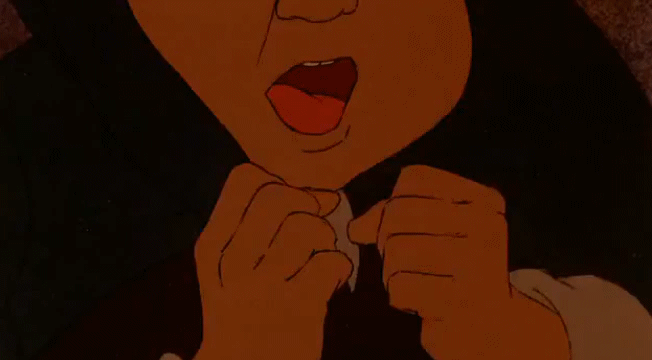
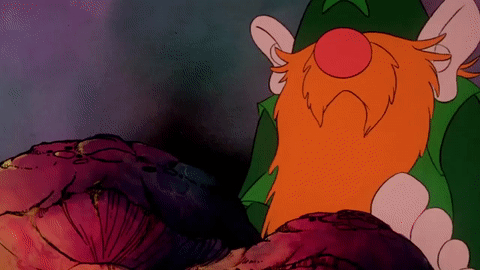
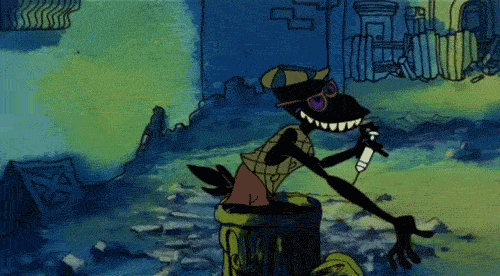


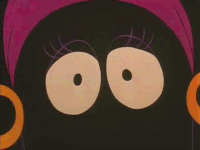
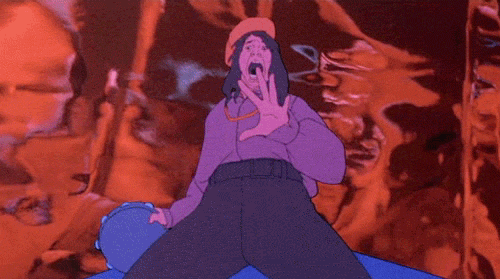

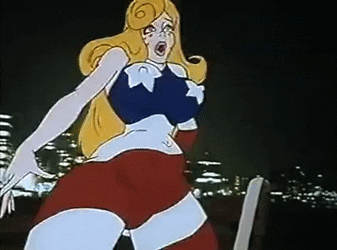
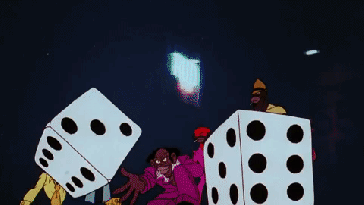
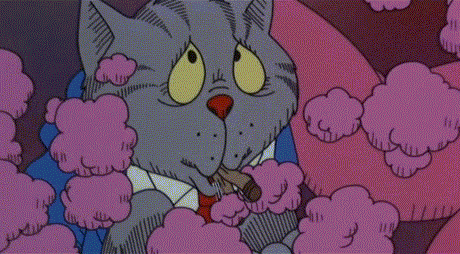


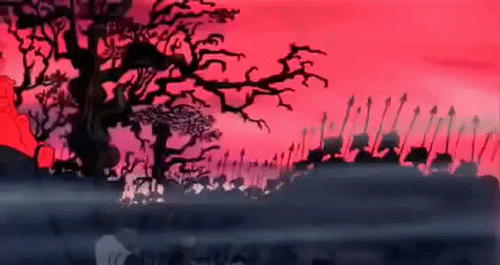
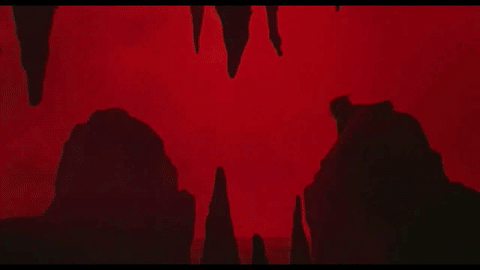
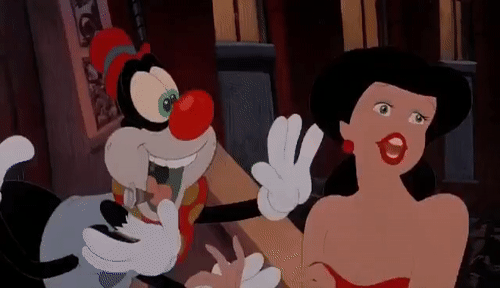
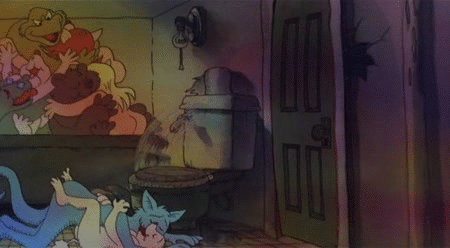
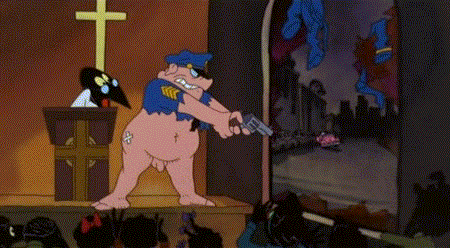
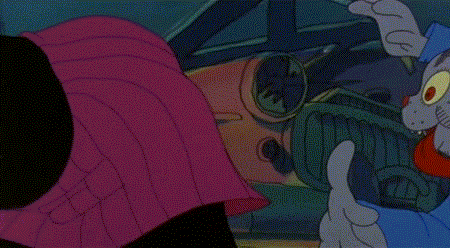


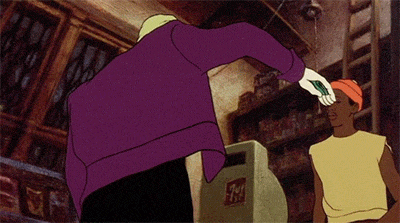


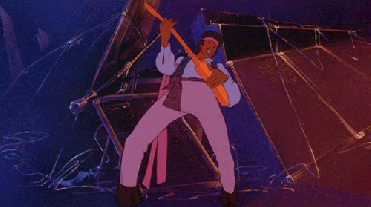
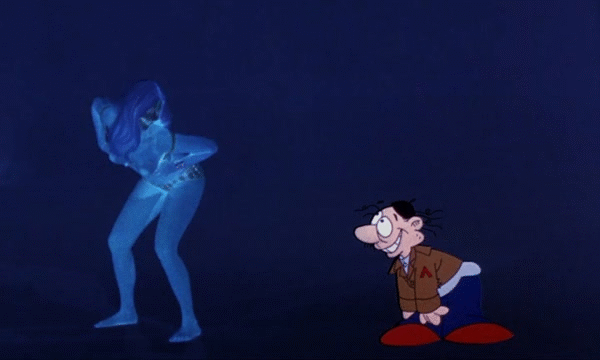
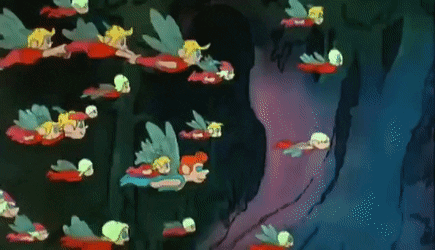
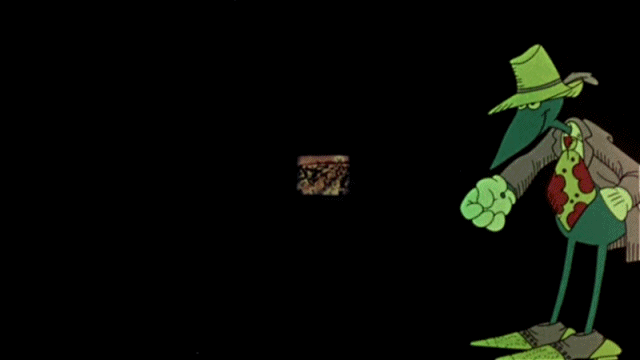
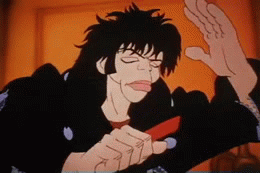
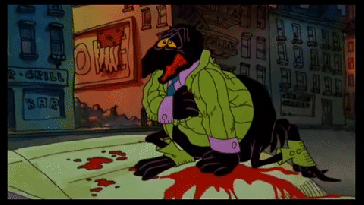
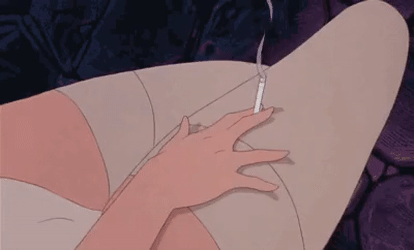
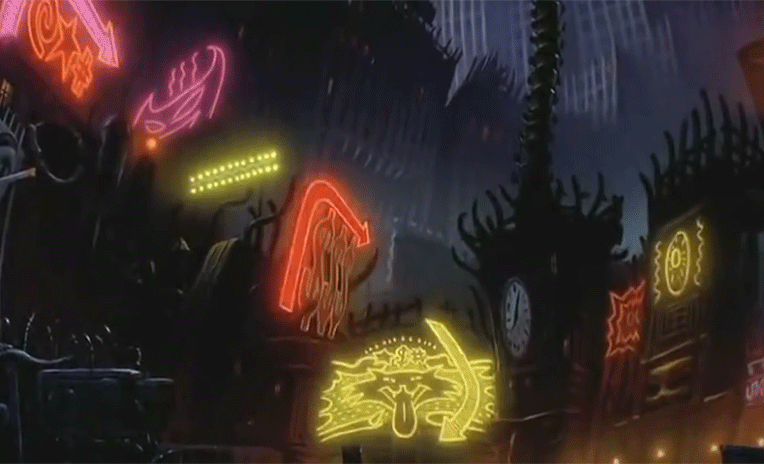

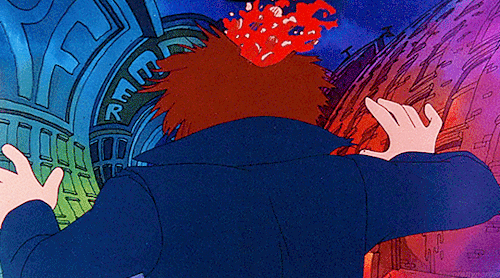

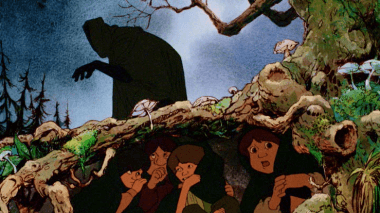
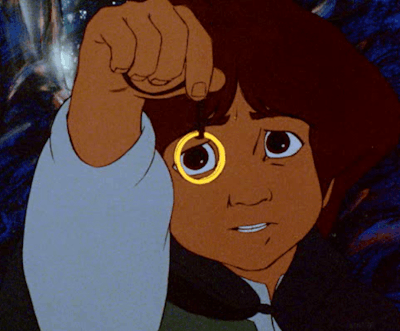
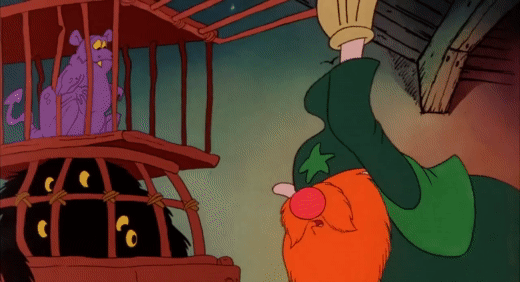
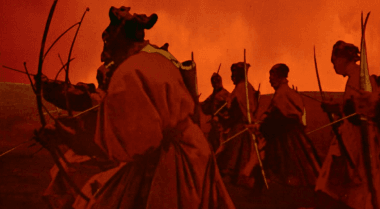
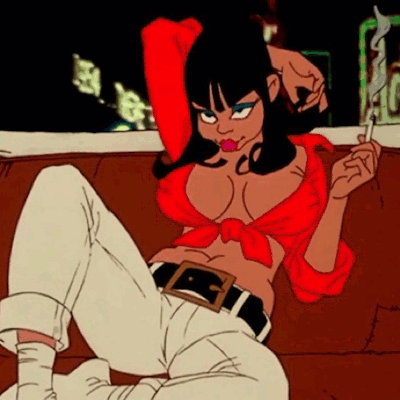

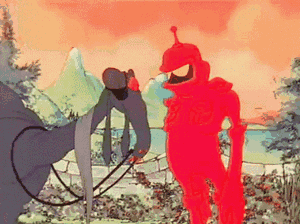
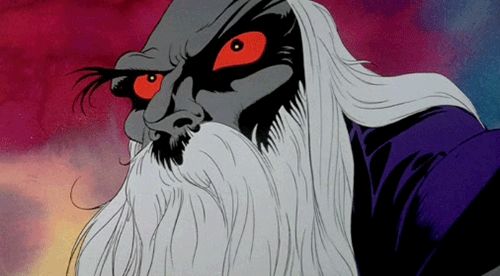


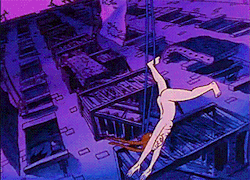
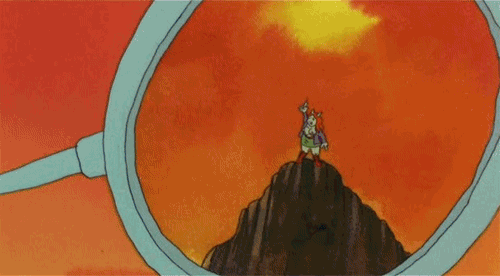
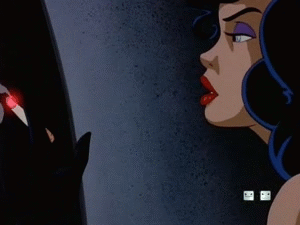

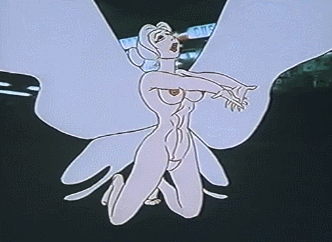

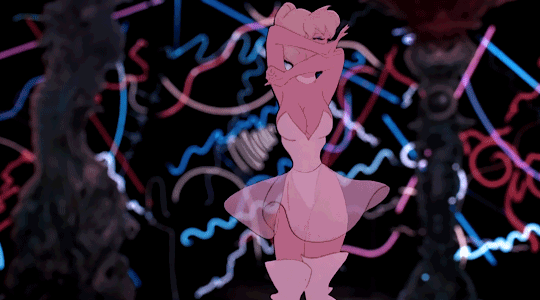
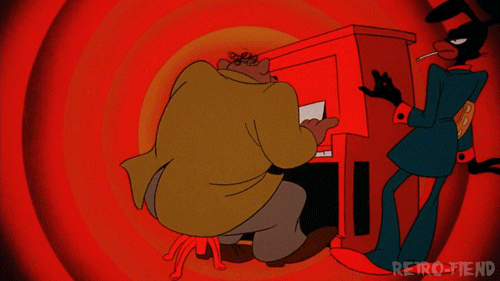
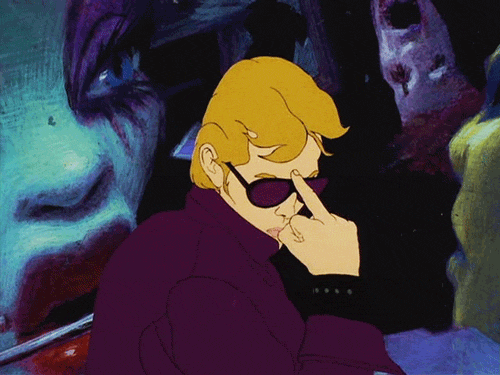
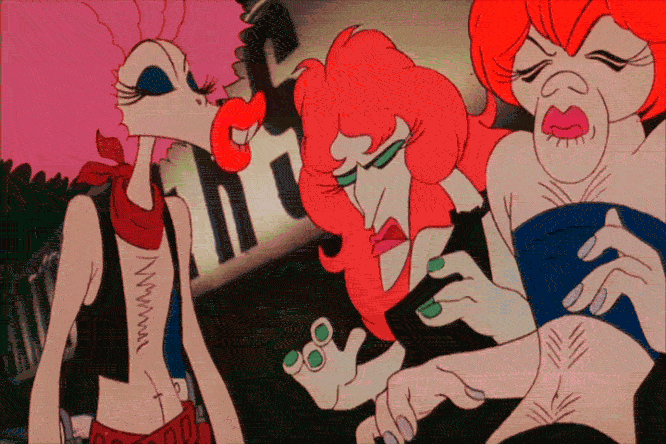

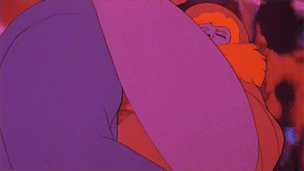


___
Further
Bakshi Studios Film
Ralph Bakshi @ Twitter
RB @ IMDb
Ethnicity and the Popular Imagination: Ralph Bakshi and the American Dream
An Animated Life: RALPH BAKSHI with Gregory Smulewicz-Zucker
Book: Unfiltered: The Complete Ralph Bakshi
Ralph Bakshi: call him the anti-Disneyes
RB @ MUBI
The Trouble With Ralph Bakshi’s The Lord Of The Rings
What makes cult film Cool World so universally hated?
In His Own Words: Ralph Bakshi Talks About “The Lord of the Rings”
Ralph Bakshi on Why ‘American Pop’ Ended With a Lame Bob Seger Song
Podcast: Ralph Bakshi On Four Decades Of Provocative Films
RALPH BAKSHI-ICONOCLAST OF ANIMATION
They don’t make them like Ralph Bakshi anymore
RALPH BAKSHI IS STILL MAKING FILMS ABOUT HIS HOME BOROUGH
STREET LIFE: THE POLITICALLY INCORRECT WORLD OF ANIMATOR RALPH BAKSHI
What can we learn today from Ralph Bakshi’s Wizards?
The Truth Hurts: An Interview With Ralph Bakshi
The Bad Boy of Animation
Ralph Bakshi by Morgan Miller
____
Extras
The World of Ralph Bakshi
Ralph Bakshi Shoot Interview!
Master of Cinema – Ralph Bakshi
Animation Director Ralph Bakshi with John A.Gallagher 1982
_____
Interview
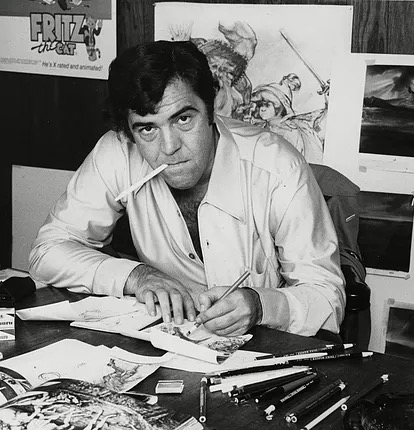
“Last Days of Coney Island” was made using funds raised by Kickstarter. Artists often say that a lack of creative restrictions, or a lack of walls to bounce off of, makes them antsy. But is that true: is it harder or easier to make the film without semi-strict creative restrictions to push back against? Or is that an unrealistic assessment of how hard it was to make “Last Days of Coney Island” your way?
Pictures tell you what to do. If these other guys get antsy, they’re antsy about what the picture is trying to say to them that they can’t get to, or that they don’t want to face. I love the freedom that Kickstarter gives me. I love any kind of freedom you can get. I’d have paid for it very dearly when I was young. So what I’m saying about these guys that don’t understand … because facing the truth of what you’re trying to get to is what art’s all about. Not what Hollywood’s all about. But I’m coming from movies from the ’50s and ’60s, from jazz musicians, Jackson Pollock, and abstract expressionism. So, where I’m coming from, soul is everything that you’re trying to get to. Maybe today’s kids get antsy when they get freedom. Not me! I love it.
I’m also opening [“Last Days of Coney Island”] on Vimeo. This is the greatest thing that’s ever happened to independent animation. I’m an independent animator, on top of everything. But I still had to deal with the studios to get money, and distribution. I get beat up, and I pay the price for that. When I went to Kickstarter, I got money for a five-minute short, just to get warmed up again. But when the picture started, it started to grow. So I started to put my own money into the film. Still, the point is, there is a hump that I’m overcoming by releasing the film on Vimeo. I own the film, so I could play it for the next 100 years. It’s marvelous: the computer, Kickstarter, and distribution we have—I think it’s a new day and age for animation. I’m very excited.
Let’s backtrack for a moment to some of the formative experiences that led you to appreciating what Kickstarter can do for you. For example, [exploitation cinema producers/distributors] Cinemation’s emphasis on “Fritz the Cat’s” X-rating during their ad campaign was a sticking point for you. How hard was it to just focus on doing what you felt the material required—that is, being as graphic as you felt the film needed to be—and ignore the idea that eventually, the film will need to be presented to a group of censors, distributors, audiences?
I was brought up a certain way. One of the ways I was brought up is I was very poor. Now, I didn’t know I was poor. My parents were immigrants living in Brownsville in Brooklyn. Having money, or not having money was never an issue with me. I was never trying to get rich. So when Warner Brothers bought [“Fritz the Cat”]—before Cinemation, Warner Brothers offered me $250,000 to do the film—they wanted to see twenty minutes. What I did was the Big Bertha sequence, which is the raunchiest sequence in “Fritz the Cat.” She’s running around with Fritz between her breasts, and Fritz is trying to go to bed with her, but he has a small penis. I did that sequence because I wanted to make sure they knew exactly what I was doing. Otherwise, it wouldn’t have been done. In a sense, I went right there to protect my film. I could have done any number of sequences, like Fritz in the park with the girls, or anything that would have been very safe, and very hip to them. That would have been very “Wow, way out” to them. “Fritz singing a folk song, wow, is that hip.” I could have done that, and gotten by the first screening. But they never would have allowed me to make the film.
When they found out what I was really up to, they threw me out of the screening room. [Laughs] They fired me, they threw me out and I went home. But I got that sequences, even if twas just a picture. That’s the kind of guy I am. Those things never bothered me. Eventually, I met [Cinemation co-founder/producer] Jerry Gross, who was making a fortune with two very good films: “Sweet Sweetback’s Badasssss Song” and “Johnny Got His Gun.” Gross happened to be in the same building that my animation studio was in. You don’t know how lucky I got. I met him in the elevator, and started talking to him about the movie. This is a true story! I You can’t make this stuff up. And he loved it. I showed him the sequence, and he went crazy. He loved it because he saw the money in the X-rating. He saw everything about it. I just wanted to get what was correct about adult animation on the screen. I would have done anything to get that stuff made.
Roger Corman has said that he found it hard to exploit his own “The Intruder” because it was about race. When you made “Coonskin,” did you similarly find that there was resistance to the very idea of doing a movie about race, let alone one that used blackface, and other stereotypes taken from minstrelsy?
Corman, and all these guys—they’re fine. They all want to make money—everyone wants to make money. I want to make money, you know? But I don’t go out there to make money, I go out there to make a movie. These guys, in the ’60s, race was there to be spoken about. If you want to avoid the truth, you can hide with Patti Page and do all kinds of Elvis Presley movies. But they won’t last as long as “Coonskin” or “Heavy Traffic.” I’m not putting those films down. But the thing about my films is my audience is still so young. The New York Times said that they were going to find a reviewer to write about me that remembers me, and is my age. I said “You have no idea how young my audience is.”
My audiences are as young as they were when I first started. And my older audiences are still my fans. What I’m saying is—the films are still relevant. And race was such an issue in the ’60s, as it is today. How could you avoid talking about it? I was watching all of these black revolutionaries care very little about the people they were trying to save: they just wanted to make as much money as they could. All these kids running around, trying to get laid, playing revolutionary. But when the shooting started, they ran away. It was all over the place. And my job was to document it, and be part of that life. So, again, wherever it took me, it took me. People have always yelled at me about making my movies, so that wasn’t anything new.
But you didn’t just document race relations, you took a rather daring approach. Just to give another example of an approach that’s rather novel and ground-breaking: you recorded real life conversations for use on “Fritz the Cat’s” soundtrack, like the ones of Black Panther members talking in a Harlem bar. How hard was it to unobtrusively record those kinds of conversations?
That’s a very good question. This is my learning curve: by increments, and increments. In other words—I was trying to find a way to express what I felt about living on the streets, growing up in Brownsville, having the experiences I had. And animation was always very … storyboarded. You would walk into a studio with live actors, and each guy would say one line at a time. And if the guy slurred, or spoke over another guy, the sound recorder would cut the scene and say, “No good, we gotta keep all the lines separate.” So I slowly was trying to break that down, and learning as I went. I took photographs of New York City, and I traced the backgrounds of the East Village for “Fritz the Cat.” Now, that’s nothing today, but that was amazing then! Because suddenly, animation was on location. These are the real streets we walked down. I was trying to get to a certain documentary realism with the sound, and everything.
The Black Panthers, and those guys: I bring them up to my studio, I turn on the tape recorder. We have a lot of drinks on my table. And we talk, and I edit the tracks. That’s like old-time radio. I grew up with radio; we couldn’t afford one. Radio was fantastic, with all those old stories retold. And I knew that you could edit tape to do whatever you want, to cut that line out, or cut those lines together. It was part of jazz, part of the improvisational nature of the film. It’s like what the street photographers would do in their day. It was all part of my life, those textures, and those feelings. You want to get some hippie kids to talk in “Fritz the Cat”? Go find some hippie girls in Washington Square Park. Give ’em five bucks, and they’ll talk your head off. [Laughs] Maybe even get laid afterwards, I don’t know.
On “Coonskin,” I recorded people singing and screaming in a church. The sound engineer quit. “I’m not putting my name up on that crap,” because the sound was so natural. I said “What are you talkin’ about?” And he walked out of the room. I had to get them all to sit down, and re-record them. Those are the kind of problems I had. It was funny, really funny. I was a young man; I was hot-headed.
Let’s move, to use your phrase, to on your “learning curve” to “Lord of the Rings.” You get even more audacious with that film with your “moving paintings” approach. You had already worked with a live-action cast in short sequences from “Coonskin” and “Heavy Traffic.” But you only animated your “Lord of the Rings” adaptation after filming it with a live-action cast. Can you describe the challenges and the rewards you got from that “moving paintings” approach?
All right, so first of all, the learning curve is still working in my favor. There were two shots in [“Heavy Traffic”], in “Coonskin,” and so forth. Each time I take another step, I try to learn from that, and adapt. Pixar, and the other great animation studios at Disney, and Dreamworks do what is now called motion control, which is animation, and live-action filming for animation. We called that rotoscoping because we didn’t have computers. It’s the same technique, only motion control isn’t as complicated as rotoscoped movies. You shoot everything live, and then take the frames of the film, and turn them into 8×10 photographs. The animator would use photographic action as a basis for the animation. Now they put wires on everyone, and as the actors move they—Dreamworks and all the other companies—see the image move on a computer, the skeletons of the motion. It’s the same thing. But they don’t have the cost of 8×10 photographs, which were very expensive.
That was, again, trying to tell a story in a painfully realistic manner. It was a way to continue to try to tell the types of stories I tell—I wanted to do “Lord of the Rings” because I loved the books—and using a technique that will allow me to do that. For me, to ask an animator to sit in a room, and draw nine Ring Wraiths on horseback, charging across a field, chasing Frodo on a horse? They’d still be doing it 30 years later. So I had to find techniques to push the medium along.
Another funny story: I’m in Spain shooting a battle sequence [for “Lord of the Rings”] inside this 14th century castle. And everybody’s in costumes, and we’re shooting live-action the scene where hundreds of men are charing the walls of a castle. The next day, the Spanish were developing the film in Madrid. So the next day, the producer comes to me, ashen-faced: “The entire Spanish laboratory has quit the film.” Here we go again. Why’d they quit the film? “Because the director doesn’t know what he’s doing!” And why does the director not know what he’s doing? “Because there are telephone poles, and airplanes coming into scenes! And cars, and trucks!” That didn’t bother me. That stuff was going to all be whited-out. I just wanted the action. But they quit! I had to talk to them for hours to convince them. Because that’s how good the costumes were. But if you looked at just the action? It was spectacular! But they were fixating on cars driving down the street. Those are the kind of fun times I had. I was laughing so hard I thought I’d die. They finally came back to the film. But they never trusted me again. They made sure of what I was doing.
Max Fleischer developed that technique. Disney used it because Fleischer never admitted it. Max Fleischer developed rotoscope on [the influential 1920s cartoon] “Koko the Clown.” I knew that Disney had used it on “A Night on Bald Mountain” from “Fantasia.” I knew the animator, Bill Tytla, from when I worked with him at [formative animation studio] Terrytoons. He told me about filming “Night on Bald Mountain” with Boris Karloff [Editor’s Note: Béla Lugosi was actually used for the “A Night on Bald Mountain” sequence, not Boris Karloff]. Disney wanted to keep that a secret, but it was Max Fleisher.
____________
17 of Ralph Bakshi’s 73 films
____________
Marvin Digs (1967)
‘Marvin, a teenage ball of fur, gets the idea to paint the entire city in groovy, psychedelic colors.’ — IMDb
the entirety
____________
The Fuz (1967)
‘An inept superhero tries to stop a tiny hairball that has been scaring various New Yorkers.’ –film affinity
the entirety
_____________
The Bickersons (1967)
‘When Ralph Bakshi worked at Paramount in 1967, he produced several theatrical shorts and proposed a dozen more. One of his assignments was to create a pilot based on the classic radio show The Bickersons using the track of a 1940s radio broadcast starring Don Ameche and Frances Langford. Paul Rapp, son of Bickersons creator Philip Rapp, found this previously lost footage and has posted it on You Tube. Note the first half is in pose reel, the second half is finished in (now faded) color.’ — Cartoon Brew
entire extant footage
_____________
Fritz the Cat (1972)
‘Fritz the Cat is a 1972 American adult animated comedy film written and directed by Ralph Bakshi as his feature film debut. Based on the comic strip of the same name by Robert Crumb, the film was the first animated feature film to receive an X rating in the United States.
‘It focuses on Fritz (voiced by Skip Hinnant), an anthropomorphic feline in mid-1960s New York City who explores the ideals of hedonism and sociopolitical consciousness. The film is a satire focusing on American college life of the era, race relations, the free love movement, and left- and right-wing politics.
‘Fritz the Cat is the most successful independent animated feature of all time, grossing over $90 million worldwide.’ — Panorama Cinema
Trailer
Excerpt
Excerpt
________________
Heavy Traffic (1973)
‘Heavy Traffic plays like a work from the id, a portrait of New York drawn in broad, angry strokes. It uses outsized sexual imagery and racial stereotypes to make satirical points that don’t let anyone off the hook, including the filmmaker himself. Michael carries himself with the smug surety of a counterculture that made a point of tearing down the old order, but never got around to proposing an alternative (or realizing they were repeating some of the past’s mistakes). Michael acts as if he’s above the grime surrounding him, but he throws around racial slurs as casually as any bigot, and on the rare occasions he interacts with women, he abuses them. Meanwhile, the city around him responds with a riot of charged, often offensive imagery. (Bakshi’s controversial follow-up, Coonskin, took these impulses even further.)
‘What makes Heavy Traffic remarkable also makes it a tough sit at times. Mid-film, it becomes a cartoon-within-a-cartoon via Michael’s borderline-pornographic, stereotype-filled interpretation of Chuck Berry’s “Maybellene.” It’s simultaneously daring and unsettling, designed to be uncomfortable and dangerous, but also unpleasant enough to make it hard to watch. At other points, the film struggles to rein in the chaos it creates, never really picking up any narrative momentum as it flits from episode to episode, an approach that probably played better in smoky theaters late at night.’ — Keith Phipps
Trailer
Excerpt
Excerpt
_____________
Coonskin (1975)
‘A subversive and satirical re-imagining of Disney’s Song Of The South transplanted to Harlem, Ralph Bakshi’s incendiary masterpiece Coonskin exploits and eviscerates grotesque American racial stereotypes with a politically incorrect, profane and vicious sense of humor. The film’s hyper energy is emphasized by Chico Hamilton’s percussive score and the mix of animation and live action set the tone for films like Who Framed Roger Rabbit. Despite its innovative visuals, there’s nothing slick about Coonskin. The movie has the perfect low-budget skeeziness of a Dolemite flick. And casting Barry White as Brother Bear/Samson and Scatman Crothers as Papa Bone adds layers of pop cultural resonance that continue to reverberate even today. (Did Rick Ross cop his fashion sense from Samson?)
‘Released in 1975 to a firestorm of controversy, it took Coonskin several years before the film found an audience that could appreciate it as an edgy aesthetic experiment and a powerful social statement. Wu Tang Clan had plans to re-make it and Spike Lee’s Bamboozled, released 25 years after Coonskin, echoes Bakshi’s brutal take on the pervasive, ages-old racism that permeates American popular culture. Al Sharpton and the Congress of Racial Equality (CORE) went apeshit and picketed Coonskin before anyone in the organization had even seen the film. (Sharpton quipped “I don’t need to see shit to smell shit.”) Bakshi had hired a number of black animators to work on the film and the NAACP felt it was an important work but still Sharpton couldn’t resist the opportunity for some press. New York City theaters were smoke-bombed during screenings of Coonskin. Nationwide theaters panicked and cancelled bookings.The film’s distributor Paramount Pictures eventually freaked and pulled it from circulation. The positive reception from critics didn’t make up for the fact that most audiences, both black and white, just didn’t get it.
‘Sometimes art needs to go over-the-top in order to roil up the dark side of our collective consciousness…to shove into the light the shit we’re too afraid to talk about and too ashamed to acknowledge. Sometimes the only way to make that reality check bearable is to find the ridiculous, the absurd and the insanity within the demons trapped in the briar patch of our shared mythologies. Darius James, author of That’s Blaxploitation: Roots of the Baadasssss ‘Tude (Rated X by an All’Whyte Jury) wrote that Coonskin “…reads like an Uncle Remus folktale rewritten by Chester Himes with all the Yoruba-based surrealism of Nigerian-author Amos Tutuola.” Bakshi takes the call to action “by any means necessary” and includes pop culture in the equation. Like the “head” comics of the 60s and early 70s, there’s more within the frame than just laffs, there are revolutions. In Coonskin, Bakshi’s masterpiece, his animated nightmares are in the tradition of humor that hurts.’ — Dangerous Minds
Trailer
the entirety
_____________
Wizards (1977)
‘Wizards was Bakshi’s first fantasy film. As is the case with all his work, it is distinctively and stunningly animated, based off of original sketches Bakshi drew while he was still in high school. During production, British illustrator Ian Miller and comic book artist Mike Ploog were brought in to contribute designs and backdrops. Interestingly, Bakshi separated Miller and Ploog, with the pair working on specific groups of characters and settings due to their individual styles.
‘The film’s basic premise is an ancient war between Industrial Technology (the evil side) and Magic (the good guys). While the two sides are presented in fairly black-and-white terms, with the baddies painted quite literally as bumbling Nazis and the heroes consisting primarily of cheeky fairies and noble knights, this somewhat crude metaphor and does not dilute the film’s weirdness. It is a complex work that contains many messages.
‘Bakshi used traditional animation techniques, often incorporating repugnant images, to create intriguing tales that require us to really think about what we’re seeing on screen. In the case of Wizards, this was Bakshi’s creative way of dealing with a very real disaster which he saw unfolding. This is a film that could just as easily have been set in our own world, with live action stars and a more direct style. Granted, it wouldn’t be nearly as captivating or fun to watch, but Bakshi’s central idea – the sense of anxiety at the core of the film – would remain.’ — Taryn McCabe
Trailer
Excerpts
Excerpt
_____________
The Lord of the Rings (1978)
‘Viewing Bakshi’s The Lord Of The Rings now, with all the knowledge of the compromises that shouldn’t have been pushed for, as well as the inevitably of-its-time technical reach and resources available to him at that moment, makes for a strange, imperfect experience at the least. It is of course blatantly unfair to hold it to the standards of Jackson’s films on that technical level even beyond the basic animation/live action split. While the distance between the filming of the two was barely two decades, the sheer leaps in effects presentation alone put each production on either side of a stark divide. Taken as is, Bakshi’s film is a strange, hybrid beast, often simultaneously gripping and head-spinning, with aesthetic and design decisions that almost effortlessly range from the striking to the utterly laughable. The acting choices vary wildly in turn, and the whole film ends on an enforced note of bizarre irresolution thanks to it not being offered as a clear first half of a larger whole. Yet for all that, the film is still a strangely affecting watch – nowhere near as unified and focused as the Rankin/Bass Hobbit, but inhabiting its own unsettling, sometimes lurid zone.’ — Ned Raggett
Trailer
The Lord of the Rings Side-by-Side: Ralph Bakshi (’78)/Peter Jackson (’01-’03)
The Lord of the Rings (1978, Bakshi) – Making of
_____________
American Pop (1981)
‘American Pop was a very personal film for Bakshi, as he was born in Palestine and his family eventually came to Brooklyn in New York City. He no doubt sought to create a film told that told the story of a similar American experience, using music as the backdrop for this. Music, ranging from artists like Louis Prima to Bob Seger, plays across the soundtrack as almost one-hundred years of history pass by.
‘As he did in The Lord of the Rings, Bakshi uses the process of rotoscoping in the film. In this process, scenes in the film are filmed in live-action, after which animators trace over this footage. Developed by Dave Fleischer (most famous for the classic Popeye cartoon shorts), Rotoscoping helps capture realistic human movement and action.
‘Rotoscoping is seen as somewhat controversial, as many felt that the “tracing” didn’t necessarily equate with the draftsmanship and acting that one usually associates with an animator. Others argue that its purely a style or technique (similar to today’s motion capture) to bring the animated story to life. Regardless of what “camp” as an animation enthusiast you may fall into, there’s no denying that Rotoscoping brings to life some very powerful and entertaining sequences in American Pop.’ — Michael Lyons
Trailer
Excerpt
Excerpt
______________
Hey Good Lookin’ (1982)
‘Hey Good Lookin’ began production in the mid-’70s, but wasn’t completed and released until 1982. As with Heavy Traffic, Bakshi drew on his formative years in 1940s and ’50s Brownsville Brooklyn for Hey Good Lookin’, which centers on the friendship of Vinnie (Romanus), ladies man and leader of the Stompers, and his best pal Crazy Shapiro (Proval). There are a number of parallels with Philip Kaufman’s The Wanderers, which though set in the Bronx in 1963, deals with a lot of the same issues: gangs and how they inform masculine codes, racial tensions, awkward teenage sex, dysfunctional father – son relationships, and the push / pull relationship the characters have with their home turf.
‘Coming on the heels of Heavy Metal and Bakshi’s own American Pop, Hey Good Lookin’ represents one of the final examples of adult-oriented animation produced by a major studio; it’s the last of Bakshi’s “street trilogy,” following Heavy Traffic and Coonskin. His next film, the 1983 PG-rated fantasy Fire and Ice, would be his last until 1992’s Cool World, a film bowdlerized by its studio, Paramount.’ — Obscure One Sheet
Trailer
Excerpt
_____________
The Rolling Stones “Harlem Shuffle” (1986)
‘Ralph Bakshi’s collaboration with The Rolling Stones for their “Harlem Shuffle” music video premiered on the night of February 28, 1986 at the 28th Annual Grammy Awards on CBS. This pairing started with a phone call in the fall of 1985. It was from Tony King, manager for The Rolling Stones, who said they were looking for a new music video. “The Stones were the bad boys of rock ‘n’ roll, so they came to the bad boy of animation,” Ralph laughs. “How could you not want to direct a Rolling Stones video?”
‘The style of the live action screams the 1980s in every way from Jagger’s pink suit to the set design with more neon that you can shake a stick at. Meanwhile the band plays behind him outside the “Kit Kat” club, with Richards looking as cool as ever, cigarette hanging out of his mouth the entire time as Jagger and many extras dance. They are interspersed with the animation of cats following suit, dancing and singing with the band.’ — Agent Palmer
the entirety
______________
Mighty Mouse: The New Adventures (1987–1988)
‘Bakshis short-lived show Mighty Mouse: The New Adventures, which debuted in 1988, may be the least-famous, most important animated program ever aired. Why did Mighty Mouse: The New Adventures matter? Because Bakshi changed the TV animation game in a way he couldn’t change the movie game. He hired young artists from the California School of the Arts, let them get weird, and launched the careers of the animators who would go on to make Animaniacs, Ren and Stimpy, Futurama, Batman: The Animated Series, Wall-E, Zootopia, and Wreck-It Ralph. He basically relaunched the entire children’s animation industry from a packed studio of 35 animators that was thrown together in a matter of days.’ — Fatherly
Season 1 Episode 1
Season 1 Episode 5
______________
My Life with the Thrill Kill Kult “Sex on Wheelz” (1991)
‘My Life with the Thrill Kill Cult performs in the music video “Sex on Wheelz” from the album “Sexplosion!” recorded for Wax Trax. and Interscope Records. The music video begins with clips of the band and people laying around. The band performs against a psychedelic background.’ — Shatterdaymorn
the entirety
_____________
Cool World (1992)
‘Cool World was universally panned upon its release. Film critic Roger Ebert awarded the film one star, calling it a “surprisingly incompetent film” in his review and slating the animation as antithetical to the progression of the plot. It received 4 per cent on Rotten Tomatoes. One blogger who wrote about the film had this to say: “If you want to have a good time watching a bad movie, you should not watch Cool World. If you want to have a generally good and happy life, free of any undue anguish or suffering, you should not watch Cool World. No one should watch Cool World. Animals should not watch Cool World. I would not show Cool World to my worst enemy. Cool World is an enhanced interrogation technique. Cool World is the video in The Ring. Cool World contains substances known to the state of California to cause birth defects. Cool World is vast, angry darkness without end.”
‘Why did Cool World ultimately fail? The director, Ralph Bakshi, was extremely vocal following the film’s release. He said in an interview that the film’s producer, “Frank Mancuso, Jr., had the script rewritten in secret. I had a huge fight with the guy and punched Mancuso, Jr. in the mouth.” Paramount and Bakshi also didn’t see eye to eye on the desired rating of the flick; Bakshi envisioned the film as a “hard-R” animated horror and Paramount wanted PG-13. Kim Basinger, who plays the vamp Holli Would, arranged a meeting with producers and Bakshi to have an intervention about the rating. Basinger wanted to be able to show the film to children in hospitals, according to Bakshi. “I said, ‘Kim, I think that’s wonderful, but you’ve got the wrong guy to do that with.’”’ — Dazed Digital
Trailer
Excerpt
Excerpt
________________
David Bowie “Real Cool World” (1992)
‘Directed by Ralph Bakshi. With David Bowie, Kevin Alexander Stea.’ — IMBb
the entirety
______________
Trickle Dickle Down (2012)
‘Trickle Dickle Down was an animated short film by famous director Ralph Bakshi released for the 2012 American presidential election. From the little information available, the short is a re-dub of clips from Bakshi’s 1975 feature film Coonskin with dialogue meant to critique 2012 Republican candidate Mitt Romney. One scene supposedly features a character talking about Mitt Romney’s economic plan as he rummages through garbage.’ — Lost Media
Excerpt
______________
Last Days of Coney Island (2015)
‘At 77 years old, Ralph Bakshi remains a fiercely independent American animator. “Last Days of Coney Island,” a new 22-minute short film directed by Bakshi, was financed with money raised on Kickstarter, and was be released exclusively on Vimeo-On-Demand on October 29, completely bypassing a theatrical release. This eccentric production and distribution strategy makes sense when you take into account the history of creative interference that Bakshi has run into throughout his career, from the X-rating that was used to advertise Bakshi’s adaptation of Robert Crumb’s “Fritz the Cat” to the controversy that Bakshi courted with his parodying of blackface and racial stereotypes in “Coonskin.”‘ — Simon Abrams
the entirety
*
p.s. Hey. There’s a very early interview with me about I WISHED conducted by the writer James Nulick that is newly launched at Expat if that’s of interest. Here. ** _Black_Acrylic, Hi, Ben. I’m a late embracer of the greatness of Deleuze, partly due to the influence of Zac, who’s a hug Deleuze fan, but, yeah, he’s really something. It’s both true that two weeks is daunting and will feel like a blink once they’ve passed. So hang in there full throttle. I’m happy they’re treating and feeding you well, at least. That’s the minimum they can do. Great, thanks for the tip about the Patrick Cowley doc! Everyone, _Black_Acrylic clues you in thusly: ‘”Patrick”, a film by Dundee graduate and Turner nominee Luke Fowler about the Hi NRG disco producer Patrick Cowley, is available via Vimeo On Demand. Here.’ ** Misanthrope, There’s Deleuze buzz lately? Interesting. Yes, ‘TMS’ made my secret passage fetish crystal clear. I hope you and your mom can feel as chill as possible during the weekend-long results waiting period. Ah, Nicholas! Great to hear he’s doing well. Since he bailed on FB, I’ve had no idea. ** David Ehrenstein, Hi. Pretty consistently in my experience so far. ** Dominik, Hi, D!!!! Oh, uh, hm, … maybe my clone would look like the young Lukas Haas off the top my barely coffeed-up head? You have an ideal looking clone in mind for your 24/7 delectation? I like Poppy’s chef books too. After your love lands all those amazing jobs he then redoes his CV again with his most flattering ass photo and immediately has a million boyfriends, G. ** alex rose, Alex! Maestro among maestros! Oh, holy whoa, that’s amazing, thank you! I’ll go look at the show, and it’s a huge thrill to be one of your picks. Thank you, man, wow. How are you? Dare tell? You’re the best, sir! Everyone, The great artist and, I’m proud to say, longtime DC’s d.l., Alex Rose has curated an online exhibition for EMPIRICAL NONSENSE intriguingly titled ON THE DEATH OF BIDEN that features a few of my scrapbook pages, but, more importantly, other fascinating works by the likes of August Strindberg, Ossian Brown, Nietzsche, and many others that I, duh, very highly recommend you visit and closely peruse by pushing down on this. ** Jamie, Hi. Lovely to be reconnected indeed! I can and can’t only imagine about having a kid. Can because my friends who’ve had one in recent times speak similarly about that experience and can’t because, well, the only kids I’ve ever birthed have lain politely printed on bookshelves. Exciting about the essay collection. I remember talking to her about Brooke-Rose and others. A badly needed book from just the right brain pan. Thanks, of course, about the deleting. I thought I knew what tedium felt like, but I didn’t until now, ha ha. Limited plans are possible. I’m going to have a coffee and talk with Gisele today and maybe another with Stephen O in the next day. And delete. And have a Zoom visit with some old friends tonight. As these times go, that’s almost busy. You managing to plan and do things in the scary, but hopefully less and lessscary, world? Love, me. ** Ian, Hi. All’s good is pretty damned good these days, so, cool. Heat already? Jesus. God, I hate heat with a passion. Give me six months of fall and six months of winter, thank you. Congrats on stopping the weed and booze intake. Is that feeling okay? I’m basically sober apart from an extremely rare sip of wine in stressful social situations, and I’m kind of really into the clear-headed thing. My younger self would be appalled, but what did he know? You probably know what’s up: deleting files and a bit of random this and that and some work. Kind of meh, but I’m getting used to it. I remember similarly being pretty into ‘Giovanni’s Room’ and much less so re: ‘GTiotM’. Interesting. High five-ish maybe. All the best back to you, bud. ** T, Oh, interesting. That you’re late to the manga thing. That gives me hope, actually. I get the feeling that manga is a massive, massive realm full of many, many great things, which is likely the only reason I’ve been stand-offish. I did read ‘From Hell’ and really liked it. I was def. honored by the yaoifying thing. No, I corresponded with the artist, who lived in Tokyo where I had never been at that point. And I was naive enough about yaoi then that I was really surprised that the artist was a women, whereas now I know that, like, 90% of yaoi makers are female. I’ve found Deleuze really worth the time and kind of a real revelation even. Thanks for the tip on the Radigue film. I’ll hit that pronto. Everyone, Hot tip from Ian. Ian: ‘I watched this short film about Eliane Radigue today. I remember she was on here what, a month or so back, and thought I’d share in case anyone else was interested! Link here.’ It’s raining here, but I’ll find some colors out there to stare at. I hope your weekend upends everything that needed upending. ** Damien Ark, Hi, Damien. Thanks! I didn’t know the interview was going up so fast. I was caught unawares, not unhappily so, of course. Peace and love snowballing in your direction too. ** Steve Erickson, Wow, you are being Mr. Prolific there with the song making. But what bette time to be. Cool. Everyone, Mr. Erickson adds to his musical oeuvre with, and here I quote, ‘another song today, with more featured appearances from sampled ice cubes’. Title: ‘Neon Evangelical Hentai’. Location: Here. I used to correspond with Poppy an long time ago, but we’ve fallen totally out touch, so I know nothing more and probably even less than what Wikipedia says. ** Bill, Your comment made it. This most recent one, I mean. It was so barely snow that I can’t really say it qualified. More like very slightly theatrical rain. Enjoy and exploit your open museums, man. We’ll be lucky if ours finally reopen a month from now. ** Okay. Someone IRL recently suggested to me that I should do a day on Ralph Bakshi. And I thought, Yeah, that’s an idea, especially since you never or read much about his work these days, which makes him a prime DC’s candidate, and … so goes the local portion of your weekend. See you on Monday.




 Now available in North America
Now available in North America 
Hi!!
Thank you for sharing the interview with us! It was interesting to see how James’ thoughts and interpretations seemed to differ from your own at some points – it seemed to illustrate what you said about novels only existing “in the privacy of the heads of their readers” so beautifully. I’ve already preordered “I WISHED,” and I know it’ll bug me so very much that it’ll take weeks for it to reach me when it finally gets published and by that time, everything will be full of others’ opinions, which I’ll have to very carefully avoid ‘til I can form my own. Not a real real problem, of course, but still. Haha.
Oh, well, yes, a young Lukas Haas seems like a very ideal clone to look at 24/7. Mine would probably look like… Hm… As of this morning, probably like a young Vincent Kartheiser.
Looks like that love with the CV has got life figured out quite nicely! Said love with the CV starting a freelance coach business that teaches people how to figure life out just like he has – and of course, it makes him a billionaire, Od.
Catching up on the last few days of blog and wow they have been so good for me. I’ve always wanted to see cool world after some old school computer game was made of it when I was a kid (and which I wasn’t allowed) but I didn’t know anything about it’s creator and his work before and around it. Taiyo Matsumoto , thanks to Jamie mcmorrow and you for the introduction.
I’ve been kind of obsessed with Dekeuze for the last couple of years and I’ve been trying to explore some of his concepts in the novel I’m working on now.
Anyway, thanks for all this.
Ahhh!!! Yes! Fritz the Cat is one of my favorite movies. Why do people hate the LOTR adaptation he made? I watched it many times as a kid and can’t help but love it. Maybe it’s my nostalgia that’s unable to criticize or see what others see. You’re more accepting of forms of art as a little child because criticism hasn’t been brought up as a concept yet.
Sorry but I ca’t say I like Bakshi’s work very much outside of “Cool World”
Dennis, Nicholas secretly came back to FB but is hardly ever on there. Said he keeps forgetting about it. I linked him to your Poetry Project piece and he’s looking forward to I Wished. 😀
Thanks. Yeah, we’ll see what’s what next week re: my mom’s results. Finally got my regular blood/urine work done today.
Have a good weekend. Looks like I might be going out tonight to see this movie Voyagers (it looks really bad, but my friend is a big Colin Farrell fan, so I relented) and then to eat at a place she and I love. Otherwise, it’s mostly errands and then doing Kayla’s and David’s taxes. Yes, I do them for them. Should make them do them themselves, but they’re easy and they’ll be able to do them when the time comes. Eek.
I haven’t thought about Bakshi in years. I loved Fritz the Cat back in the day, not sure if it’ll work for me now. Maybe I’ll take another look soon.
Dennis and James, that’s a really nice interview. I’ll be counting the weeks till I Wished is out.
Alex’s online exhibition looks great!
Lukas Haas, yes. I can see that.
Bill
Hey Dennis. Cool post this weekend. I love animated movies/tv shows. I started using a platform called Kanopy and they have some of Bakshi’s movies so I can check that out this week.
I was trying to find PGL in Canada and that’s how I came across Kanopy. You sign in with your local library card and get access to a lot of movies. Last night we watched A Cat in Paris. The dialogue was so so but the animation was fun and the cat was super cute.
http://Www.Kanopy.com for anyone who is looking for movies.
Shout to Black Acryllic whose Leeds United upset man c with ten heroes on the pitch in the 90’+ min.
And lastly, do you know if there is somewhere I can preorder ‘I WISHED’ in Canada?
Ciao mi amor , ian
@ Ian, cheers! That Leeds game really was quite something.
Bakshi is a definite hero. His anarchic spirit is a perfect fit for kids’ cartoons and his shows were some of my childhood faves.
I finally got to see the Luke Fowler film Patrick in the far corner of the hospital’s day room where I could pick up a bit of 4G signal. Really enjoyed it, a meditative travelogue around the San Francisco landscape that features some great examples of Cowley’s music. Happy to say that I’ve seen a couple of decent films in these very constrained circumstances.
I was going to say that this guy’s name seemed familiar to me, and then I remembered the LORD OF THE RINGS thing.
Read your interview with James Nulick today… I recall James mentioning it to me every now and then a few months ago so to finally see it in its final form is great. I thought it was an interesting interview and it certainly has me looking forward to I WISHED! I do have a question though. For many years you used to say that 10 novels would be your max limit. If my math is right, this will be your 10th book… I was just curious if you were still sticking to that earlier limit, or have since changed your mind.
Hey, Dennis,
I have a friend who keeps recommending Bakshi’s stuff to me. This post provides many, many more reasons to do that sooner rather than later. I love animation as a medium, several of my favorite films are animated, so I’m always looking for work in it that goes beyond the narrow confines of Disney (although I love one or two of the older Disney films too). Anyway it’s a great collection of stuff this weekend. Ditto for the Deleuze and the Matsumoto (thanks McMorrow!). How are things with you? I hope everything is well. My past few days have been pretty good overall. I got—wow!—my first dose of the Pfizer vaccine today, so that’s awesome. My arm hurts and I feel a little under the weather but the steps toward security are thrilling. Also I got to see friends this weekend, and my goodness, since Thursday, I’ve watched several good movies. I watched both “Angst” and “Funeral Parade of Roses” for the first time, and they’ve both basically immediately entered the ranks of my all-time favorites. I mean, I just think they’re both so amazing (radically different, of course); they both knocked me over. And I rewatched another favorite, “In the Realm of the Senses”, and I liked it even more and got more out of it upon the second viewing than I did upon the first. (Any thoughts on any of those movies, if you’ve seen them?) So all of that has been really great. Otherwise uneventful but fine, except my dog’s very unwell, but we’re dealing with it. How about you? Have recent days brought you anything worthwhile? Wonderful, even? I do dearly hope so. Talk to you tomorrow, Dennis.
Dennis,
Thank you for chatting with me, it was a lot of fun! And it looks like people enjoyed it 🙂
Love,
James